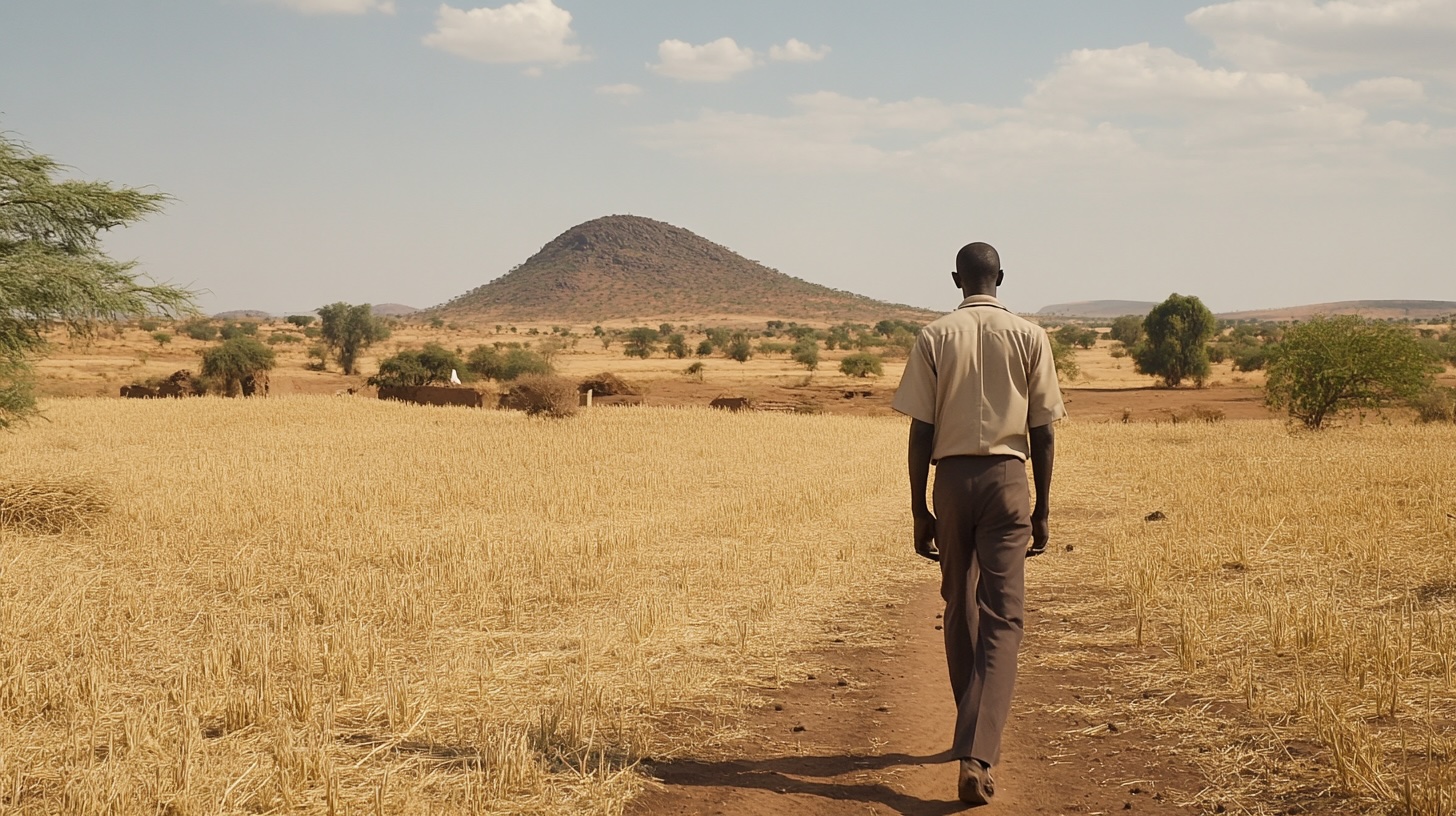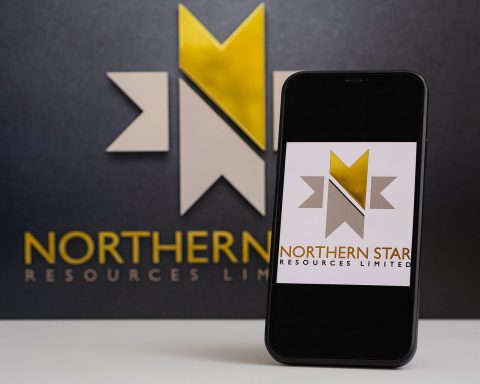- Sudan’s internet backbone is centered at Port Sudan and links land via the East Africa Submarine System (EASSy) and FLAG/FALCON, with terrestrial fiber reaching Egypt and Ethiopia.
- Sudatel (Sudani) is over 60% state-owned and operates the national backbone along with fixed-line, mobile, and internet services under the Sudani brand.
- Zain Sudan, a subsidiary of Kuwait’s Zain Group, is the largest mobile operator with roughly 50% of the mobile market and offers nationwide 2G/3G/4G services.
- MTN Sudan, part of South Africa’s MTN Group, holds about a 25% share of the mobile market and provides mobile voice and data.
- Canar Telecom is a fixed-line and broadband operator originally backed by Etisalat, now owned by local investors, running fiber links and deploying CDMA2000 and LTE fixed-wireless in urban areas.
- The Telecom and Postal Regulatory Authority oversees the sector with authority to monitor and filter internet content, and Sudan’s internet freedom is rated Not Free (Freedom House 29/100 in 2022).
- As of 2022 about 29% of Sudan’s population used the internet, over 90% of online traffic comes from mobile devices, and about 59% were within 4G/LTE coverage as of 2023.
- Sudan has experienced repeated shutdowns, including a 37-day nationwide blackout in June 2019, a 25-day shutdown after the October 2021 coup, and in 2022 outages such as daily limited connectivity during exams for 12 days and a 25-hour disruption on June 30 to thwart a planned protest.
- During the 2023-2024 conflict, Starlink satellite internet terminals were deployed in war zones, with the RSF obtaining units via a UAE black market and charging around 3,000 Sudanese pounds per hour (~1 USD) for access.
- A major regional project is the West to East Africa North Africa (WE-Africa-NA) terrestrial fiber link, led by Sudatel with partners in Chad and Cameroon, expected to run from Port Sudan to Cameroon to increase redundancy.
General Internet Infrastructure and Major Service Providers
Sudan’s internet infrastructure relies on a national fiber-optic backbone and international gateways centered at Port Sudan. The country is connected to several submarine cables, including the East Africa Submarine System (EASSy) and FLAG/FALCON networks, which land at the Red Sea coast [1]. Terrestrial fiber links extend to neighboring countries (e.g. Egypt and Ethiopia) to route traffic regionally. However, fixed-line broadband infrastructure is limited and much of the population accesses the internet via wireless networks. Sudan maintains satellite earth stations (Intelsat, Arabsat) for international connectivity as well [2], but satellite links historically served mainly as backups or for remote areas.
Major service providers: Sudan’s telecom market is served by a handful of operators:
- Sudatel (Sudani): A telecommunications company (over 60% state-owned) that operates the national backbone and a mobile network under the brand “Sudani” [3] [4]. Sudatel provides fixed-line, mobile, and internet services and is a key infrastructure owner.
- Zain Sudan: A subsidiary of Kuwait’s Zain Group and the largest mobile operator, with roughly half of the mobile market share [5]. Zain (formerly Mobitel) offers nationwide 2G/3G/4G services.
- MTN Sudan: Part of South Africa’s MTN Group, holding about a quarter of the mobile market [6]. MTN provides mobile voice and data services across Sudan.
- Canar Telecom: A fixed-line and broadband operator originally backed by the UAE’s Etisalat (now owned by local investors). Canar runs fiber links and has deployed CDMA2000 and LTE fixed-wireless broadband in urban areas [7].
Additionally, a few smaller ISPs (such as Sudanet and ZinaNet) serve niche markets [8], and mobile satellite services (Thuraya, others) are used in remote regions [9]. Overall, the telecom infrastructure is relatively centralized – Sudatel and Canar own most backbone fibers [10]– and mobile networks are the primary means of internet access for the majority of Sudanese.
Government Regulations, Policies, and Censorship
The Sudanese government maintains tight control over telecommunications through regulatory bodies and laws. The National Telecommunications Corporation (now the Telecom and Postal Regulatory Authority) oversees the sector and has the authority to monitor and filter internet content [11]. Internet censorship in Sudan is significant: an OpenNet Initiative study noted “substantial” filtering of social media and other tools, and selective blocking of political content [12]. Officials openly acknowledge filtering material that violates public morals or threatens order, targeting pornography, LGBT content, dating sites, and proxy/anonymizer sites [13]. Popular platforms have been intermittently blocked – for example, YouTube has frequently been made inaccessible by authorities [14]during periods of tension.
Surveillance of online communications is also prevalent. The National Intelligence and Security Service (NISS) has been known to monitor emails and social media messages without warrant [15]. Telecom operators are expected to cooperate with security agencies, enabling interception of phone and internet traffic. Legal frameworks such as the Cybercrime Act have provisions that criminalize the spread of “false information,” which officials have used to prosecute journalists and activists for online speech [16]. These laws, combined with repressive media statutes, serve to deter criticism of the government on digital platforms.
Notably, Sudan’s 2019 transitional constitution explicitly affirmed the right to access the internet and freedom of expression [17]. In practice, however, the authorities continue to impose restrictions. News websites and online newspapers that voice opposition have faced blocking or forced shutdowns [18]. Journalists and bloggers risk arrest and harassment for content posted online [19]. Overall, internet freedom in Sudan is rated as “Not Free” – Freedom House’s 2022 index gave Sudan a score of just 29/100 for internet freedom [20]. The state’s policies of censorship, surveillance, and information control significantly constrain online discourse.
Accessibility, Penetration Rates, and Digital Divide
Internet access in Sudan remains uneven and faces many challenges. As of 2022, roughly 29% of the population was using the internet [21]. This penetration rate is well below the African continental average (about 42% in 2022) [22]and less than half the global average (~66%). Usage is highly concentrated in urban centers like Khartoum, Omdurman, and Port Sudan. Urban–rural disparities are pronounced: in cities, mobile broadband is widely available, whereas vast rural and peripheral regions have sparse network coverage or rely on older 2G networks. In the early 2010s, internet access was “widely available in urban areas, but limited by lack of infrastructure in rural areas” [23]– a pattern that persists today. Areas in conflict (such as parts of Darfur or South Kordofan) also historically had far lower connectivity even before the current war.
A significant digital divide exists along gender and socio-economic lines. Only about 17% of men and 11% of womenin Sudan were internet users as of 2016 [24], indicating a sizable gender gap in digital access. Cultural norms, lower literacy rates, and limited digital skills among women contribute to this divide [25]. Poverty is another barrier – despite relatively cheap data plans, many Sudanese have low incomes and cannot afford smartphones or continuous data usage. The country actually offered some of Africa’s most affordable mobile internet(by 2020 Sudan was among the five least expensive countries globally for 1GB of data) [26], but affordability at the national level is offset by widespread poverty and economic instability (hyperinflation). Moreover, electricity shortages and poor infrastructure in remote areas hinder both network deployment and device charging, further excluding rural communities.
Sudan’s internet usage is overwhelmingly mobile-centric. Over 90% of online traffic in Sudan comes from mobile devices (smartphones or mobile modems) [27], one of the highest rates in Africa. This is because fixed broadband (e.g. home fiber or DSL) is rare – as of 2012, fixed broadband subscriptions were essentially 0.1% of the population [28]and, while the absolute number has grown since, fixed-line internet remains negligible outside of some businesses and urban households. The heavy reliance on mobile internet has made access more accessible in a basic sense (given the ubiquity of cellphones), but it also means that those without a mobile device or who live outside cell coverage are left behind. In summary, internet penetration has improved modestly over the years, but a digital divide persists in Sudan, cleaving along urban/rural, gender, and income lines.
Impact of Political Instability and Conflict on Connectivity
Frequent political instability – including government crackdowns, coups, and the ongoing civil conflict – has heavily impacted Sudan’s internet connectivity. Internet shutdowns have been used as a tool by authorities and now by warring factions, drastically undermining access. Some key incidents include:
- June 2019: Amid mass pro-democracy protests that led to the ouster of President al-Bashir, the military council ordered a nationwide internet blackout. Service was cut off on June 3, 2019, and not restored for 37 days [29]. This long shutdown (the longest in Sudan’s history) was intended to stifle protest organizing and information flow during a volatile period.
- October 2021: Following a military coup on October 25, 2021, Sudan experienced an almost complete internet shutdown for about 25 days [30]. The post-coup junta blocked connectivity as protesters mobilized against military rule. Despite a court order on November 9 to restore internet, full access only resumed on November 18 [31].
- 2022: Even during relative peace, the transitional authorities imposed targeted shutdowns. For instance, in June 2022 the internet was turned off nationwide for a few hours daily over 12 days to prevent cheating during high school exams [32]. Later that month (June 30, 2022), services were disrupted for about 25 hours to thwart a planned “million-man” protest march [33]. Smaller regional blackouts also occurred, such as an outage in Blue Nile state during tribal clashes in October 2022 [34]. These events show a pattern of using connectivity blackouts as a response to civil unrest or security incidents.
- April 2023 – Present: The eruption of open warfare between the Sudanese Armed Forces (SAF) and the Rapid Support Forces (RSF) in April 2023 has plunged Sudan’s connectivity into crisis. Both factions have weaponized internet access, deliberately cutting off networks in areas they seek to control [35]. For example, RSF fighters seized control of major data centers in Khartoum in early 2024 and shut down the two largest ISPs (Sudani and MTN), causing connectivity for those providers to drop to near zero [36] [37]. The RSF also forced the third mobile operator, Zain, to disable service in army-held regions like Port Sudan [38]. Each side has attempted to blackout communications in territories held by the other, turning the internet into a battleground. This has resulted in days or weeks-long outages in large parts of the country, severely limiting the flow of information.
Beyond intentional shutdowns, the physical destruction from conflict has damaged Sudan’s telecom infrastructure. Fighting in Khartoum and other cities has hit fiber-optic cables, cellular towers, and power supplies needed to keep networks running [39]. Many facilities have been looted or subjected to sabotage. As a result, even where operators attempt to keep services up, coverage and quality have deteriorated. By mid-2023, connectivity in war-torn areas was often completely unavailable, and even elsewhere network quality was unreliable due to fuel shortages and infrastructure strain.
These disruptions have had dire consequences. They isolate civilians, making it difficult to call family, access news, or use mobile money for basic needs [40] [41]. Humanitarian organizations warn that shutdowns during conflict impede life-saving assistance and information delivery [42] [43]. The internet blackouts in Sudan amid war have been described as collective punishment, cutting off millions from the outside world.
Additionally, the instability raises cybersecurity concerns. Sudan’s capacity to prevent or respond to cyber threats is very limited – the country scored only 35 out of 100 on the ITU’s Global Cybersecurity Index in 2023 [44], indicating weak preparedness. With government IT infrastructure and ISP networks under duress, the risk of cyber attacks, data breaches, or misuse of personal data increases. There have been reports of both state and non-state actors engaging in digital espionage and propaganda hacking (such as defacing websites or spreading disinformation on social media) during the conflict, though on a smaller scale compared to the network shutdowns. Overall, political turmoil has made Sudan’s internet environment one of the most unstable in the world – access can vanish overnight due to a government order or an act of war, underscoring how entwined connectivity is with the country’s security situation.
Role of Mobile Networks and Broadband Expansion Efforts
Mobile networks play a dominant role in Sudan’s connectivity, and efforts have been underway to expand broadband coverage via both wireless and fiber initiatives. Given the weak state of the fixed-line infrastructure, Sudan leapfrogged into a mobile-centric internet model in the 2000s and 2010s. 3G and 4G mobile broadband became the primary way people got online. As of 2023, about 59% of the population was within coverage of at least one 4G/LTE network [45]. (There is not yet any 5G service in Sudan, and plans for 5G are on hold due to the current conflict and economic constraints.) Mobile subscription rates have grown steadily – by early 2023 Sudan had ~32.6 million active mobile connections, roughly 69% of the population [46]. This indicates many individuals have a mobile phone (though some have multiple SIMs, and rural coverage gaps remain). The proliferation of affordable smartphones over the last decade also contributed to more mobile internet use.
In terms of network upgrades, telecom operators have made some progress despite economic hardships. Sudatel, for example, launched a program in 2016 to build more telecom towers in rural areas and upgrade its network technology [47]. In 2018, Sudatel signed deals with Nokia to modernize its mobile infrastructure and with Liquid Telecom (a pan-African fiber company) to expand Sudan’s fiber broadband network [48]. Canar Telecom, the fixed-line operator, also pivoted to wireless broadband by obtaining spectrum in 2017 and rolling out LTE services as an alternative to wired DSL [49]. These initiatives have aimed to improve both the reach and quality of internet service. Indeed, Sudan’s median mobile download speed increased by over 55% in the year up to early 2023, rising by 4.76 Mbps (to roughly 13.4 Mbps) as 4G networks expanded [50]. Fixed broadband speeds, while still low, also showed some improvement (up 40% in the same period) [51].
To address backhaul and international capacity, Sudan has been investing in fiber-optic backbone projects. A significant recent project is the West to East Africa North Africa (WE-Africa-NA) terrestrial fiber link, a partnership between Sudatel and operators in Chad and Cameroon. This cable, when completed, will run from Port Sudan on the Red Sea across Sudan and Chad to Cameroon on the Atlantic, forming a high-speed cross-continental route [52]. The goal is to increase redundancy and meet rising data demand in Sudan and its neighbors, especially as data consumption grew during the COVID-19 era [53]. Sudan also continues to utilize undersea cables via Port Sudan – existing links to Saudi Arabia and the broader EMEA region help provide international bandwidth.
The government had also set up a Universal Service Fund (USF) mechanism intended to finance telecom services in underserved areas [54]. However, due to economic and political upheaval, many planned USF projects and network expansions have stalled. Hyperinflation and currency devaluation in recent years made it costly to import telecom equipment, hampering network rollout [55] [56]. Despite these obstacles, the private sector (Zain, MTN, Sudatel) continued to add mobile sites and launch new services (like mobile banking apps and mobile money) up until the war. For instance, Zain Sudan was preparing a mobile banking platform in 2022 [57], and MTN Sudan partnered with Ericsson to improve its mobile financial services infrastructure [58]– these indicate an ecosystem trying to modernize.
In summary, mobile networks have been the driving force behind increasing internet access in Sudan, and there have been concerted expansion efforts: upgrading to 4G, extending fiber backbones, and connecting Sudan in new regional cable initiatives. These efforts have yielded improvements in coverage and speed for users. Yet, progress has been limited by the country’s persistent economic troubles and, now, by the destruction and uncertainty of war. The gains in Sudan’s network development remain fragile – further investment and stability will be needed to continue expanding broadband access nationwide and to eventually introduce next-generation technologies.
Satellite Internet: Availability, Providers, and Future Potential
Satellite internet has historically played a limited role in Sudan’s connectivity, but recent developments hint at its growing importance, especially during emergencies. In the past, Sudanese businesses, NGOs, and government agencies in remote areas have used VSAT (very small aperture terminal) satellite connections to get online. Several international providers (e.g., Intelsat, Arabsat, and regional satellite broadband services) offer coverage over Sudan. However, regulatory policies required organizations or individuals to obtain licenses to operate satellite terminals, and the high cost of satellite bandwidth put it out of reach for the general public. As a result, satellite internet use was confined to specific needs – for example, U.N. missions, embassies, or oil companies in remote parts of the country would deploy VSAT links for basic connectivity. There was little to no consumer-facing satellite broadband service in Sudan (no local SkyDSL or HughesNet presence, for instance), and certainly no Starlink – at least until the recent conflict.
Sudanese authorities have generally been cautious about satellite communications because such services bypass terrestrial controls. All international internet gateways historically went through Sudan’s licensed telecom operators, allowing the government to monitor and filter traffic. Unrestricted satellite internet could undermine this control, so in peacetime the government did not actively encourage its use. That said, the need for connectivity in rural and underserved areas has always been a challenge, and satellite technology presents a potential solution if regulated properly. In the late 2010s, there were discussions about expanding satellite broadband in Africa. For Sudan, interest in options like OneWeb or SpaceX’s Starlink began to grow, especially after 2019 when the new transitional government was more open to improving internet access. But concrete progress remained slow.
The breakout of war in 2023 dramatically changed the equation. As the warring factions began cutting off conventional networks, satellite internet emerged as a lifeline for those who could obtain it. By late 2023, some Starlink terminals (from SpaceX’s low-Earth-orbit satellite constellation) had made their way into Sudan via unofficial channels [59]. In areas under RSF control that were in an internet blackout, people started relying on Starlink units to get back online [60]. For example, parts of Khartoum, Al Jazeera state, and Darfur that had lost mobile and fiber connectivity were reported to be “entirely on Starlink” for internet access [61]. The RSF itself managed to acquire Starlink kits through a black market in the UAE [62]. Once in possession of these devices, the RSF enabled limited internet service and even sold access to civilians at exorbitant prices – around 3,000 Sudanese pounds per hour (roughly 1 USD/hour) for use of a Starlink connection [63]. This effectively meant only wealthier individuals or businesses could afford to use the satellite link, creating an ad-hoc and unequal solution. Nonetheless, for humanitarian groups and residents desperate to communicate, Starlink provided a crucial if imperfect lifeline during the complete shutdowns.
The Sudanese government (loyal to the army) has taken note of Starlink’s presence and expressed concerns. They reportedly requested SpaceX to coordinate with authorities or disable unauthorized Starlink services in Sudan [64], fearing that unregulated satellite internet could be used by the RSF for military advantage or could bypass official oversight. As of late 2024, SpaceX had not responded to these requests and Starlink remained an unlicensed grey-area service in Sudan’s conflict zones [65]. This situation is reminiscent of other conflict areas where Starlink has been deployed without governmental control. It raises questions about future regulation: if and when Sudan is stabilized, the government may need to establish clear policies on satellite broadband – whether to legalize and incorporate services like Starlink into its telecom framework or to restrict them.
Looking ahead, satellite internet holds significant potential for Sudan. The country’s vast geography and the damage to terrestrial networks make satellite coverage an attractive option to reconnect remote communities and as a backup for critical infrastructure. Emerging high-throughput satellite providers could offer relatively fast internet to areas where laying fiber is impractical. For example, companies like OneWeb, Amazon’s Project Kuiper, or continued Starlink expansion could theoretically blanket Sudan with coverage in the coming years. This could help bridge the digital divide by bringing internet access to rural villages, refugee camps, or conflict-affected regions once devices are available and affordable. It could also enhance resiliency – an always-on satellite link could keep banks, hospitals, and government services online even if local fiber lines are cut.
However, the realization of this potential depends on stability and policy. In a best-case scenario, a post-conflict Sudan could invite satellite operators to provide service under licenses that ensure coordination with national security (to address any surveillance concerns) while still extending connectivity. If done right, satellite broadband could significantly raise Sudan’s internet penetration and mitigate future shutdowns (since it’s harder to disable). Conversely, if authorities remain wary, they might ban private satellite equipment and stick strictly to land-based networks, which would limit this technology’s impact. International pressure and the demonstrated humanitarian value of services like Starlink during the war may push Sudan to be more accepting of satellite internet. In any event, the conflict has shown that satellite internet is no longer just theoretical for Sudan – it’s already a factor on the ground, and its role is likely to grow in the country’s connectivity landscape moving forward.
Regional and Global Comparison
Compared to its regional neighbors and global standards, Sudan’s internet access ranks poorly in terms of availability, speed, and freedom. Internet penetration in Sudan (circa 30% of the population) is lagging behind not only the global average (over 65% of people worldwide are online) but also many countries in Africa. For instance, in North Africa, countries like Egypt have an internet usage rate above 70%, and even some sub-Saharan countries like Kenya and Nigeria have 50-70% of their population online. Sudan’s 30% looks low in comparison, though it is higher than a few conflict-affected peers (Ethiopia’s rate is around 25%, and South Sudan’s barely 12% [66]). This relatively low penetration is a reflection of Sudan’s economic challenges and instability, especially since 2011 when the country lost oil-rich South Sudan – resources that could have been invested in telecom development were lost [67]. In the East Africa region, Sudan’s penetration is roughly on par with the average for least-developed countries but significantly below more developed African markets.
In terms of internet speed, Sudan is among the slowest in the world. Average broadband speeds in Sudan have been measured in the single-digit megabits per second. One analysis in 2023 found Sudan’s average internet speed around 7.9 Mbps, placing it near the bottom globally (comparable to Yemen and Equatorial Guinea) [68]. By contrast, the global average download speed (for fixed broadband) is above 60 Mbps, and even the average across sub-Saharan Africa is about 12 Mbps [69]. Sudan’s slow speeds are largely due to reliance on limited-capacity mobile networks and the lack of fiber-to-the-home. While 4G has improved speeds somewhat, many users are still on 3G or constrained by congestion and the impacts of power outages. For example, neighboring Egypt enjoys far higher speeds (over 20 Mbps on average), and countries like Morocco and Kenya have made strides with fiber deployments that Sudan hasn’t matched. Thus, on speed and quality, Sudan trails behind both regional averages and global benchmarks by a significant margin.
Perhaps most stark is Sudan’s standing on internet freedom and openness. Years of censorship and recent conflict-related shutdowns have made Sudan one of the most restrictive online environments. Freedom House consistently rates Sudan near the bottom of its Freedom on the Net index. In the 2022 report, Sudan scored 29/100 (“Not Free”), indicating pervasive controls [70]. This score is only slightly better than the very worst in Africa (Ethiopia and Egypt each scored in the mid-20s in 2022–2023 reports) and is far below freer societies. By comparison, countries like Nigeria and Kenya are rated “Partly Free” with scores in the 50s, and global democracies like Germany or Canada score in the high 70s to 90s. Sudan’s low ranking is driven by factors we have discussed: state censorship, surveillance, legal harassment of online users, and the blunt instrument of internet shutdowns. In fact, Sudan has become notorious for frequent network shutdowns, a trait it unfortunately shares with a few other authoritarian regimes. This greatly undermines the reliability of internet access in Sudan relative to global norms – in most countries, total internet blackouts are extremely rare, whereas in Sudan they have been recurrent.
In a regional context, Sudan’s internet landscape is often compared with those of its neighbors in the Horn of Africa and the Arab world. It fares a bit better than South Sudan (which has even less infrastructure and more dire connectivity), and somewhat similarly to Ethiopia in terms of restrictions (Ethiopia also has a history of shutdowns and low penetration). However, it lags behind Egypt in both access and perhaps even in consistency of service (Egypt has higher usage but also heavy censorship). Compared to Gulf countries or North African peers like Morocco, Sudan is far behind in telecom development. Sudan’s mobile phone penetration and internet use took off later and more slowly due to economic isolation (international sanctions in the 1990s-2000s and internal conflicts). Even within Africa, Sudan – once touted in early 2010s as having a relatively developed telecom sector [71]– has fallen behind many African countries on innovation and connectivity because political instability reversed some gains.
In summary, Sudan’s internet access falls below regional and global standards on most indicators: fewer people proportionally are connected; those who are connected experience slower speeds; and the online environment is tightly controlled and periodically disrupted. Bridging these gaps will require not only infrastructure investment and modernization to raise speeds and coverage, but also significant improvements in governance and stability to ensure the internet in Sudan can operate with the freedom and reliability taken for granted in much of the world [72]. Without such changes, Sudan will continue to rank poorly in global comparisons of digital access and internet freedom.
References
1. en.wikipedia.org, 2. en.wikipedia.org, 3. en.wikipedia.org, 4. smex.org, 5. www.reuters.com, 6. www.reuters.com, 7. susafrica.com, 8. www.budde.com.au, 9. www.budde.com.au, 10. www.clingendael.org, 11. en.wikipedia.org, 12. en.wikipedia.org, 13. en.wikipedia.org, 14. en.wikipedia.org, 15. en.wikipedia.org, 16. cipesa.org, 17. cipesa.org, 18. cipesa.org, 19. en.wikipedia.org, 20. paradigmhq.org, 21. pulse.internetsociety.org, 22. pulse.internetsociety.org, 23. en.wikipedia.org, 24. pulse.internetsociety.org, 25. news.gallup.com, 26. cipesa.org, 27. www.statista.com, 28. en.wikipedia.org, 29. blog.cloudflare.com, 30. blog.cloudflare.com, 31. blog.cloudflare.com, 32. paradigmhq.org, 33. paradigmhq.org, 34. paradigmhq.org, 35. www.accessnow.org, 36. www.accessnow.org, 37. www.reuters.com, 38. www.reuters.com, 39. www.reuters.com, 40. www.reuters.com, 41. www.reuters.com, 42. www.accessnow.org, 43. www.accessnow.org, 44. pulse.internetsociety.org, 45. pulse.internetsociety.org, 46. www.go-globe.com, 47. susafrica.com, 48. susafrica.com, 49. susafrica.com, 50. www.go-globe.com, 51. www.go-globe.com, 52. www.budde.com.au, 53. www.budde.com.au, 54. www.budde.com.au, 55. www.reuters.com, 56. www.reuters.com, 57. www.budde.com.au, 58. www.budde.com.au, 59. smex.org, 60. smex.org, 61. smex.org, 62. smex.org, 63. smex.org, 64. smex.org, 65. smex.org, 66. tradingeconomics.com, 67. www.budde.com.au, 68. www.newsweek.com, 69. www.statista.com, 70. paradigmhq.org, 71. en.wikipedia.org, 72. paradigmhq.org










